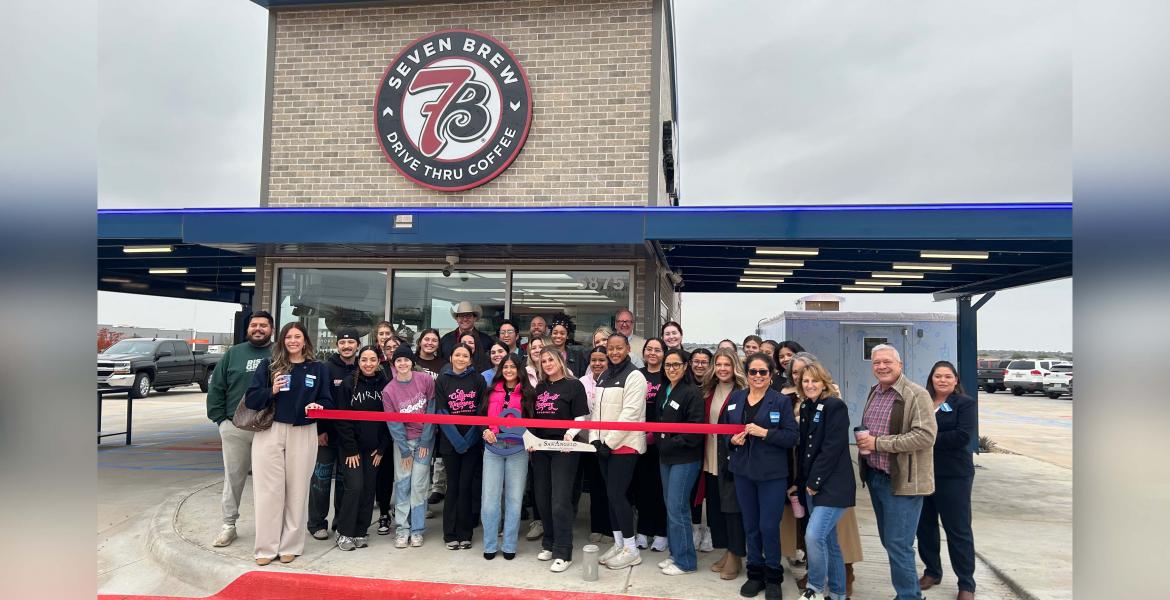There’s no doubt that in 2014, amidst a growing oil demand in San Angelo, the city’s economy made some outstanding gains. Commercial building was up, labor market statistics were up, and home sales and rentals spiked.
Many people this past year believed, with the drop of oil prices that shook the San Angelo and Texas economy, that this growth would somehow falter, and so would the economy.
However, based on final 2015 numbers provided both by the San Angelo Chamber of Commerce, Concho Valley Workforce Solutions, the Bureau of Economic Analysis (BEA) and other city sources, San Angelo fared well the past year despite the oil bust because it’s not “an energy sector-reliant economy,” said Michael Looney, vice president of Marketing & Recruitment at the Chamber.
“San Angelo continued to experience another year of positive gains in 2015, fueled by the diversity of our economy,” Looney stated.
Looney noted, however, that there’s no doubt 2014 witnessed major positive economic gains.
In a written document, Looney explained, “The Bureau of Economic Analysis (BEA) report published on Sept. 23, 2015, showed that San Angelo ranked Number 2 in the nation for gross domestic product growth in 2014 out of 381 MSAs nationwide, with the San Angelo economy growing by 11.4%. San Angelo’s Gross Domestic Product (GDP) was $4,818 billion, gaining nearly half a billion in one year, more than double the growth of any of the previous five years.”
Looney stated that although BEA 2015 data will not be as high as it was in 2014, it will still reflect positive returns on the city’s economic health.
“Based on our experience, the BEA’s 2015 data will very likely show similar high gains based on the fact that few of the petroleum companies in the Concho Valley have had layoffs and the durable goods sectors have experienced similar reported returns throughout 2015,” Looney continued.
San Angelo’s Labor Market
Looney explained that despite the decline in petroleum-related hiring from 2014, the Concho Valley Workforce reported 1,086 jobs unfilled as of Oct. 2015.
“There are several reasons for this: The energy-related companies in San Angelo are almost all production-related, and not focused on exploration and drilling, which is far more capital and personnel intensive than production,” Looney said.
Looney reiterated that simply put, San Angelo does not heavily rely on the energy sector.
As for the overall market, San Angelo did witness a small increase in unemployment. Based on information provided by Concho Valley Workforce Solutions, the unemployment rate from Nov. 2014 to Nov. 2015 showed an increase of less than a percentage point at 4.3 percent.
San Angelo’s unemployment rate remains .02 percentage points less than the state of Texas and the Concho Valley as a whole.
The amount of people in the civilian labor force dropped by 1,287 people; total employment in 2015 came in at -1,655 less than 2014; and, the total unemployment number in 2014 was 1,991. It increased to 2,359 in 2015.
As for the largest employers in San Angelo for 2015, here are the top 10:
- Goodfellow Air Force Base: 5,127 employees
- Shannon Health System: 2,712 employees
- San Angelo Independent School District: 1,973
- Angelo State University: 1,625
- San Angelo State Supported Living: 950
- City of San Angelo: 936
- San Angelo Community Medical Center: 720
- SITEL, Inc.: 602
- Tom Green County: 514
- Ethicon (Johnson & Johnson): 510
Looney stated, as the city’s largest employer, Goodfellow’s annual economic impact on the San Angelo area remains at over $512 million annually.
“2015 marked a banner year for the Goodfellow Air Force Base-San Angelo Community partnership,” Looney said. “As our largest employer, the San Angelo Chamber of Commerce collaborates with its economic development partners, COSADC, the City of San Angelo, ASU, and Tom Green County, to forge long-lasting programs dedicated to increase the effectiveness and expansion of the Goodfellow mission.”
Also, the industry sectors San Angelo secured in 2015, or are in discussion with, include aerospace, pet products, pipeline production, electricity brokerage, contact/call centers, industrial over-the-road transportation, steel fabrication, nursing, food production, natural gas/petroleum equipment fabrication, education/technical training provider and senior healthcare services.
Finally, in 2014, San Angelo allotted 15 new commercial building permits for a total value of $2,938,394. In 2015, that number was lower, but not by much. There were 12 permits allotted for a total value of $2,419,197. The overall value of new commercial never faltered below the $2 million mark.
San Angelo Living
Looney noted that San Angelo citizens enjoy a high quality of life because of available affordable housing and the city’s diversified economy “creates a durable portfolio equipped to withstand most economic downward pressure.”
Looney stated, “This is due to [the economy’s] ability to continually shift focus on its wide variety of economic sectors—that is, when one or two sectors experience downward pressure, the resulting available workforce is absorbed by the other.”
In 2014, rental rates spiked as a result of the so-called oil boom, and as reported previously, residents felt the effects of those spikes. To review, click here. However, as reported by the San Angelo Association of Realtors, home sales remain healthy.
“It’s been a good year for real estate,” said Max Puello, president of the Association. “It lends to the economic diversity we have here in San Angelo. We’re not just an oilfield town, so I think we have that going for us.”
Again, although numbers from 2014 to 2015 dropped, the total home sales year-to-date in 2014 was 1,402, and the total in 2015 was 1,387.
Some Additional Numbers
Spending in the area in 2015 was also affected somewhat, which reflects in the final Sales and Use Tax Rebated numbers. In 2014, the total dollar amount in this area came out to $2,396,577. In 2015, that number suffered a -12.61 percent difference at $2,070,694. Overall, however, the year-to-date totals only suffered a -1.37 difference.
Additionally, in 2014, with the oilfield boom, hotel occupancy rates spiked to a healthy 61 percent, and the average room rate went for $104. Well, with the bust, that number dropped to an occupancy rate of 39 percent in 2015. The average daily room rate also dropped to $74, which lowered demand by 16.1 percent.
That didn’t stop new hotels from building, however. In 2015, San Angelo witnessed quite a few new hotels go up, and the area near Home Depot off of the Houston Harte Expressway now mirrors what people can find in bigger cities.
Optimism for 2016
As the numbers state, the economic health of San Angelo remains steady. Although some numbers dropped as a result of lower oil prices that placed a stint in economic growth that the city enjoyed in 2014, the diversity of the economy provided a cushion that kept COSA from experiencing the economic downturn many other Texas cities, and Texas as a whole, experienced.
Subscribe to the LIVE! Daily
Required






Post a comment to this article here: